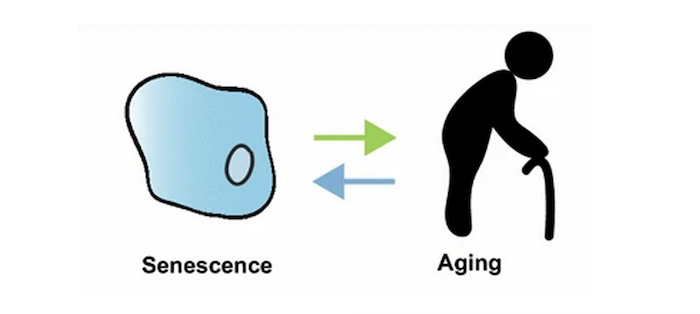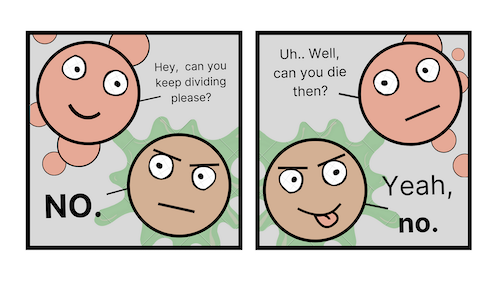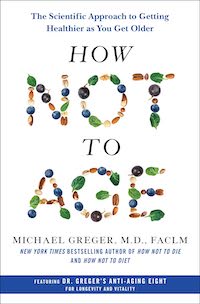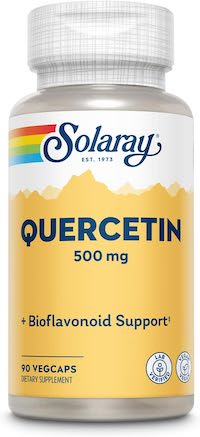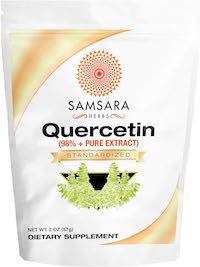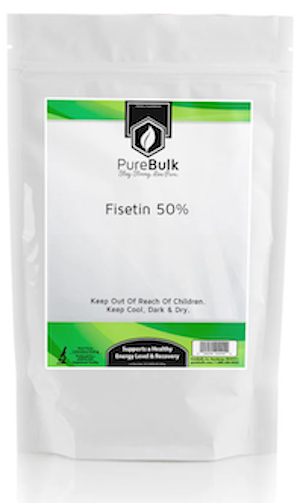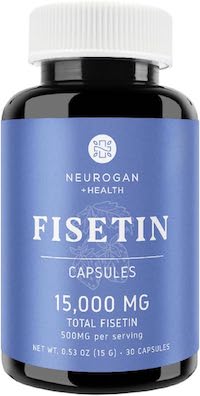The Best Senolytics You Can Use Now To Improve How You Age
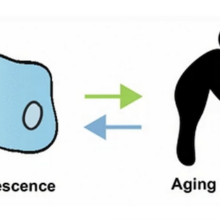
The best senolytics are proven interventions to help you get rid of senescent cells and the pro-inflammatory biomarkers they produce, which can be very detrimental to our health as we age. Here’s how to do it.
The best senolytics are the interventions that can help you reduce your senescent cell burden. I’m going to tell you what they are and why they’re important, but some definitions would be helpful before I continue:
- Senescence, in the context of biology, refers to the gradual deterioration of functional characteristics in living organisms. It can be broadly categorized into cellular senescence, which involves a permanent arrest of the cell cycle (cell division), and organismal senescence, which encompasses the aging of whole organisms, like you.
- Senolytics refers to a class of drugs (compounds/molecules/supplements) that selectively clear senescent cells. But as you’ll soon see, I’ve stretched that definition to include exercise, which appears to be an effective intervention as well, and is one of the four best senolytics I review in this post.
This post explains how damaging senescent cells and their byproducts are to your healthspan — the years over which you’re healthy — and summarizes the references and scientific studies that show that you can reduce your senescent cell burden through four best senolytics: exercise and three over-the-counter supplements.
Three things instigated the writing of this post:
- A study published in Aging Cell in October 2023 that underscores the harm done by senescent cell proliferation,
- Dr. Michael Greger’s new book, How Not to Age, and
- The immediate opportunity available to you now to reduce your senescent cell burden.
Let’s begin with a summary of Aging Cell study.
Study Summary
Aging Cell published a study in October 2023 entitled, Biomarkers of cellular senescence and risk of death in humans that concluded that senescent cells produce specific biomarkers that increase the risk of dying.
I’ll summarize the study and then dig into some of the specifics that will underscore why you need to take seriously the harm that senescent cells do to you as you age.
Research Aims and Questions:
The study aimed to identify biomarkers of cellular senescence that are associated with an increased risk of death in humans.
Methodology:
The researchers used a variety of senescence biomarkers and conducted a comprehensive analysis to determine their association with mortality. They analyzed data from a large population-based cohort study.
Key Findings:
The key findings of the study revealed that the five senescence biomarkers that are part of the SASP and most strongly associated with an increased risk of death are GDF15, RAGE, VEGFA, PARC, and MMP2 — all of which are defined and discussed below.
Conclusions:
The study concluded that these biomarkers could be used to assess the risk of death in humans.
Limitations:
The study had some limitations, such as the need for further research to validate the findings and the potential influence of confounding factors on the results.
Now that you’ve got a sense of the terrain, let’s look at it more closely.
The Harmful Effects of Age-related SASP Inflammation
The study’s conclusion highlights the issue at hand:
… biomarkers of cellular senescence [are] informative predictors of clinically important health outcomes in older adults, including death.
I’m going to give you some details that support that conclusion, but first a bit of context distilled from Dr. Greger’s book, How Not to Age.
Fifty years ago, biologist Leonard Hayflick showed that human cells in a lab dish don’t replicate endlessly—they grow and divide about fifty times before stopping in a state known as cellular senescence.
This limit, termed the “Hayflick limit,” shields the body from cancer by halting the spread of damaged cells. But as our lifespan extends, these non-replicating cells pile up, releasing inflammatory chemicals called the senescence-associated secretory phenotype (SASP).
In youth, our immune system clears these cells, but as we age, they accumulate, causing chronic inflammation that’s linked to various diseases, from Alzheimer’s to cancer.
These senescent cells, once beneficial, turn into troublemakers, damaging surrounding tissues and contributing to the aging process. They release SASP (the senescence-associated secretory phenotype), which involves the release of various proinflammatory molecules such as cytokines, chemokines, growth factors, and proteases into the extracellular environment. This disrupts local tissue integrity and leads to chronic inflammation.
As this happens, conditions like obesity exacerbate the problem by producing more senescent fat cells. Chemotherapy, while effective against cancer, can trigger SASP-related inflammation, causing side effects like heart toxicity. Inflammation related to obesity, which tends to worsen with age [1] has been tied to the buildup of SASP-producing senescent fat cells [2].
The SASP can have both beneficial and detrimental effects, but in the context of the five senescence biomarkers (GDF15, RAGE, VEGFA, PARC, and MMP2), the SASP is decidedly detrimental — it contributes to their production and proliferation, which is associated with an increased risk of death [3][4]:
- GDF15 (Growth Differentiation Factor 15): GDF15 is a protein that is produced in response to stress or damage in the body. its levels can be elevated in senescent cells, and can contribute to the increased production of GDF15.
- RAGE (Receptor for Advanced Glycation End Products): RAGE is a receptor that is involved in the development and progression of various diseases, including diabetes and Alzheimer’s disease. It binds to advanced glycation end products, which are molecules that can damage cells and tissues. Its activation can lead to the production of various inflammatory molecules. The SASP can contribute to the upregulation of RAGE.
- VEGFA (Vascular Endothelial Growth Factor A): VEGFA is a protein that is involved in the growth of new blood vessels. It plays a critical role in processes such as wound healing and the development of the circulatory system. Its levels can be elevated in senescent cells. VEGFA is a protein that is part of the SASP and its levels can be elevated in senescent cells. The SASP can contribute to the increased production of VEGFA.
- PARC (Pulmonary and Activation-Regulated Chemokine): PARC is a protein that is involved in regulating the immune response in the lungs, and is thought to play a role in the development of conditions such as asthma and chronic obstructive pulmonary disease (COPD). It’is part of the SASP and therefore its levels can be elevated in senescent cells.
- MMP2 (Matrix Metalloproteinase 2): MMP2 is an enzyme that is involved in the breakdown of the extracellular matrix, which is the scaffold that supports cells and tissues in the body. It plays a role in processes such as tissue remodeling and the growth of new blood vessels.
The bottom line is that as we age we accumulate too many senescent cells and the SASP they produce, and that’s bad for our health.
The Four Best Senolytics That Reduce Your Senescent Cell Burden
I’ve addressed how to get rid of senescent cells in various posts, such as these:
And in my last post, Three Lifespan Interventions You Can Do Now That Make A Difference, I underscored that to “kill off (some) senescent cells” is a valuable lifespan intervention.
So, why keep beating this drum?
Well, I hope that by now this post has made the answer clear. It distills down to this:
- Senescent cell proliferation clearly ages you, and is a predictor of death.
- There’s a straightforward, doable way you can reduce the senescent cell burden in your body.
Identifying a causal factor of the aging process for which there is an easy solution is the holy grail in gerontology.
Which brings me to the aforementioned Dr. Greger’s newly published 600 page tome, How Not to Age. I just finished reading the chapter that addresses senescent cells, and I want to share with you what his meticulously researched conclusion is regarding what to do to reduce your senescent cell burden.
Mind you, it’s not that Dr. Greger discovered something new that I did not cover in the various posts listed above, but what he did was add some gravitas to the usefulness of the interventions.
In his book, Dr. Greger writes that when scientists confirmed the link between cellular senescence and aging-related diseases, a hunt for the best senolytics ensued. Senolytics are compounds that eliminate senescent cells, but it’s not just compounds found in foods and supplements that achieve this — exercise plays a large role as well.
Exercise is a Senolytic
Exercise is the first of the four best senolytics covered here. Several studies have provided evidence supporting the role of exercise — particularly endurance training — in countering the age-related accumulation of senescent cells and reducing biomarkers of cellular senescence.
For example, a systematic review published in the Wiley Online Library in 2020 concluded that exercise can reduce the markers of senescent cells in healthy humans, and it lowered the markers of senescent cells in obese individuals [5]. Research published in Frontiers in Physiology in 2023 demonstrated that exercise protects vascular function by countering senescent cells in older adults [6], and by reducing chronic inflammation. As mentioned earlier, inflammation related to obesity tends to worsen with age [7], and has been tied to the buildup of SASP-producing senescent fat cells [8].
Importantly, endurance training has been associated with reduced markers of cellular senescence in the colon mucosa of older adults. You may not have heard of colon mucosa, but it’s a very important part of our anatomy. This is the innermost layer of the colon, which is the large intestine, and is responsible for absorbing water and nutrients from the remaining waste, forming and storing stool, and moving waste out of the body. The colon mucosa is a critical component of the colon’s structure and function, and its health is essential for overall digestive well-being.
We don’t want senescence biomarkers to proliferate within the colon mucosa, but that’s just what happens as we age. A study published in February 2023 found that classical senescence biomarkers “were markedly higher in the colon mucosa of middle-aged and older overweight adults than in young sedentary individuals, but this upregulation was significantly blunted in age-matched endurance runners” [9].
These findings collectively support the role of exercise in preventing the accumulation of senescent cells and reducing markers of cellular senescence in both preclinical and human studies. And just 12 weeks makes a difference — unfortunately, the bar is pretty high.
In the 2023 study just referenced, it was found that a 12-week exercise program reduced circulating senescence biomarkers in older adults, but these were master athletes who ran an average 48 miles/week (range 30 to 90 miles/week) for an average of 21 years (range 5–35 years).
What about us mere mortals?
Well, we’re not sure. The specific exercise routines, including the requisite frequency, intensity, and duration that are most effective in reducing senescent cells and SASP in humans are still being elucidated. While the evidence supports the potential of chronic high-volume high-intensity endurance exercise in reducing senescent cells, more comprehensive and rigorous studies are needed to determine the specific exercise routines that are most effective to drive therapeutic benefits.
Irrespective of specific cardiorespiratory routines that could reduce your senescent cell burden, what we do know is that improving your Vo2 max is proven to have the most significant positive impact on healthspan and reducing all cause mortality (death for any reason). This is achieved by regular 30 minute baseline aerobic exercise (Zone 2) and one to two high intensity interval training, as I outline in How To Reduce Obesity In Older Adults and Improve VO2 Max and The Best Exercises to Live Longer: Dr. Attia’s Outlive, Part 2.
Flavonoids (and one alkaloid) are Senolytics
Flavonoids are a subgroup of phytonutrients, which are natural chemicals or compounds produced by plants. More than 10,000 phytonutrients have been identified in dietary plants. They are found in a variety of plant-based foods, including fruits, vegetables, whole grains, nuts, beans and tea.
Flavonoids specifically refer to a large family of phytonutrients that are one of the most biologically important polyphenolic compounds, occurring ubiquitously in plant-based diets or medicinal plants. Known for their antioxidant properties, flavonoids have been associated with various health benefits, such as protecting against cancer and cardiovascular disease… and, of course, killing off senescent cells.
Alkaloids are a class of naturally occurring organic compounds that contain at least one nitrogen atom. They are produced by a variety of organisms, including bacteria, fungi, plants, and animals. Alkaloids have a wide range of pharmacological activities and are known for their diverse and important physiological effects on humans and other animals. Alkaloids are found in approximately 20% of plant species and play essential roles in both human medicine and in organisms’ natural defense. They are known for their therapeutic potential and are used in various medications, such as morphine and codeine, which are powerful analgesics. Alkaloids have diverse chemical structures and are of significant interest due to their physiological effects and potential therapeutic applications.
Two well-tested flavonoid and one alkaloid compounds are:
- Quercetin,
- Fisetin, and
- Piperlongumine.
Let’s see what these three are so valuable…
(1) Quercetin is a flavonoid found in apples, kale and onions, has shown promise in reducing senescent cell burden and extending healthspan.
Quercetin doses as low as the human equivalent of one small apple a week reduced cellular senescence and improved the healthspan of aging mice. They experienced less hair loss, had enhanced heart function, and gained greater athletic endurance into the equivalent of their sixties [10].
What about humans?
People experience significantly better improvement in artery function within hours of eating unpeeled apples than after eating apples that had been peeled [11], given that most of quercetin is in the apple peel.
Quercetin supplements can lower blood pressure [12], cholesterol [13], and inflammation [14]. Although most of the quercetin supplement studies use doses not easily achievable through diet, just three-quarters of a teaspoon of fresh onion can acutely improve blood pressure and fluidity compared to placebo [15], helping to explain why those who consume more quercetin appear to have less than half the risk of dying from heart disease.[16].
I don’t tout this as the best brand, but I take this one in powdered form:
This is the brand I take in capsule form:
Click here to watch Dr. Gerger's quercetin video
Naturally, rather than take a quercetin supplement, you can load up on apples, kale and onions.
(2) Fistein is a flavonoid concentrated in strawberries, and is nearly twice as potent as quercetin [17]. It can increase the lifespan of yeast by 55%, fruit flies by 23%, and mice by 75% — even those who began taking it at an age equivalent to 75 human years in humans [18]. A separate study found that fisetin can also increase long-term memory in mice [19]. Markers of cellular senescence and SASP were significantly reduced in all analyzed tissues in conjunction with a reduction in age-related pathology [20].
I don’t tout this as the best brand, but I take this one in powdered form:
This is the brand I take in capsule form:
What about humans?
Like quercetin, fisetin has been shown to have anti-inflammatory effects in clinical trials [21], and a reduction of senescence and SASP markers. And like quercetin, fisetin is found in food,has no reported side effects, and is sold in dietary supplements; consequently, researchers designed studies to test fisetin’s anti-aging potential.
Currently, there are more than a dozen fisetin trials in the works, pitting it against various age-related conditions, including osteoarthritis, osteoporosis, frailty, kidney disease, and cognitive decline [22]. The fact that there is so much clinical interest in a natural product that lacks the financial incentives that traditionally drive so much of biomedical research speaks to its promise.
As I said earlier, strawberries are the richest food source of fisetin. Randomized controlled trials show that strawberries can improve cognition [23], cholesterol, inflammation [24], and osteoarthritis [25], as well as boost beneficial gut bugs, including Christensenellaceae [26], a newly discovered bacterial family found associated with longevity based on studies of centenarians and supercentenarians [27].
Why not ditch the strawberries and go straight to the supplements that contain more fisetin than you’re likely to get from strawberries, unless you have an appetite for pounds of the fruit?
Frankly, in addition to consuming strawberries nearly every day, I do supplement with fisetin on a cycle basis (typically, one month on, two off), but Drs. Micheal Greger and Brad Stanfield don’t recommend the supplements.
Check out Greger’s and Stanfield’s videos that describe their objections to fisetin supplements.
content
(3) Piperlongumine (Piper longum) is an alkaloid found concentrated in a spice commonly sold in Indian grocery stores as pippali. It’s also known as “pibo” in China and “long pepper” in Europe).
It has been the subject of research due to its potential anti-inflammatory and anti-cancer properties. Piperlongumine has been shown to induce cell death and increase the level of reactive oxygen species (ROS) in various cancer cells. While it is not a flavonoid, it is of interest in the field of senolytics, which are small molecules under research to determine if they can selectively induce death of senescent cells and improve health. Piperlongumine has been studied for its potential as a senolytic, and it is among the compounds being investigated for its senolytic properties [28][29][30].
That pic below is of the brand I use. Typically, I put it in my smoothies, but you CAN treat it as a spice to pepper up your meals, as Dr. Greger does. In his book he writes that he was “convinced enough to add it to my daily spice regimen alongside amla [effective blood sugar control], black cumin, and turmeric”. Note
I detail what it is and what it can do in see.nf/pippali. I was convinced enough to add it to my daily spice regimen alongside amla (see here), black cumin (see here), and turmeric (see here). Note that the use of pippali during pregnancy and breastfeeding is not recommended.555
Watch Dr. Greger’s pippali video
+Watch Dr. Greger’s piperlongumine video
Your Takeaway
Remember these three things:
- Scenescent cells are useful when you’re young, but not when you get older. When you’re young, scenescent cells signal the immune system to dive in and get rid of them, but as we age our immune system gradually gets weaker. When that happens, scenescent cells accumulate and produce SASP.
- SASP stands for senescence-associated secretory phenotype and they’re harmful to health, basically because they’re pro-inflammatory and their secretions harm nearby healthy cells. The older we get, the more scenescent cells and SASP we get, increasing our risk of death.
- Senolytics generally refer to molecules/compounds that come in the form of drugs or supplements, but in this post I expanded the meaning to include an important intervention — exercise, the first of the four best senolytics I cover in this post. The other three best senolytics are supplements. Consider supplementing with quercetin, fisetin, pippali and increasing your aerobic and anaerobic exercise.
Last Updated on February 7, 2024 by Joe Garma

